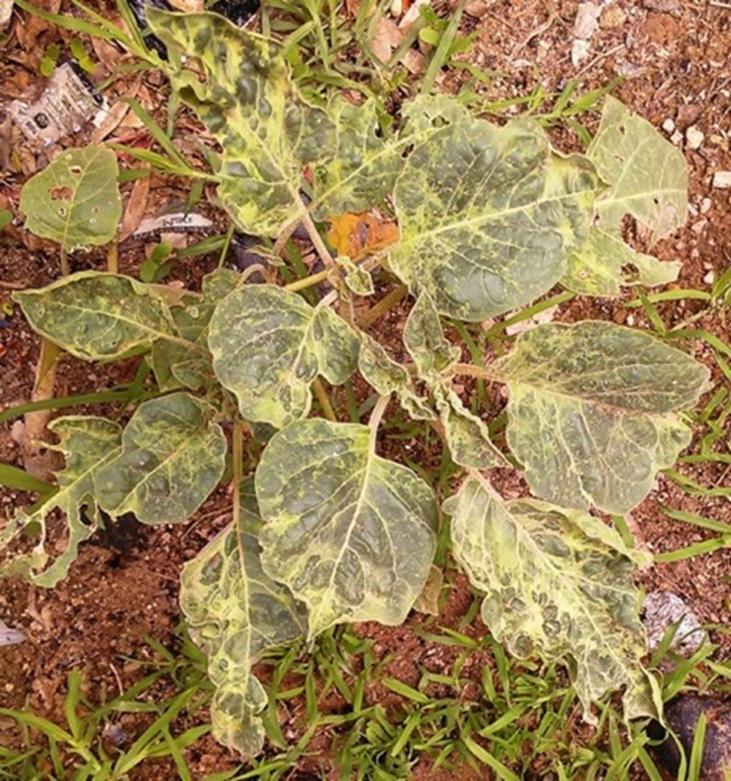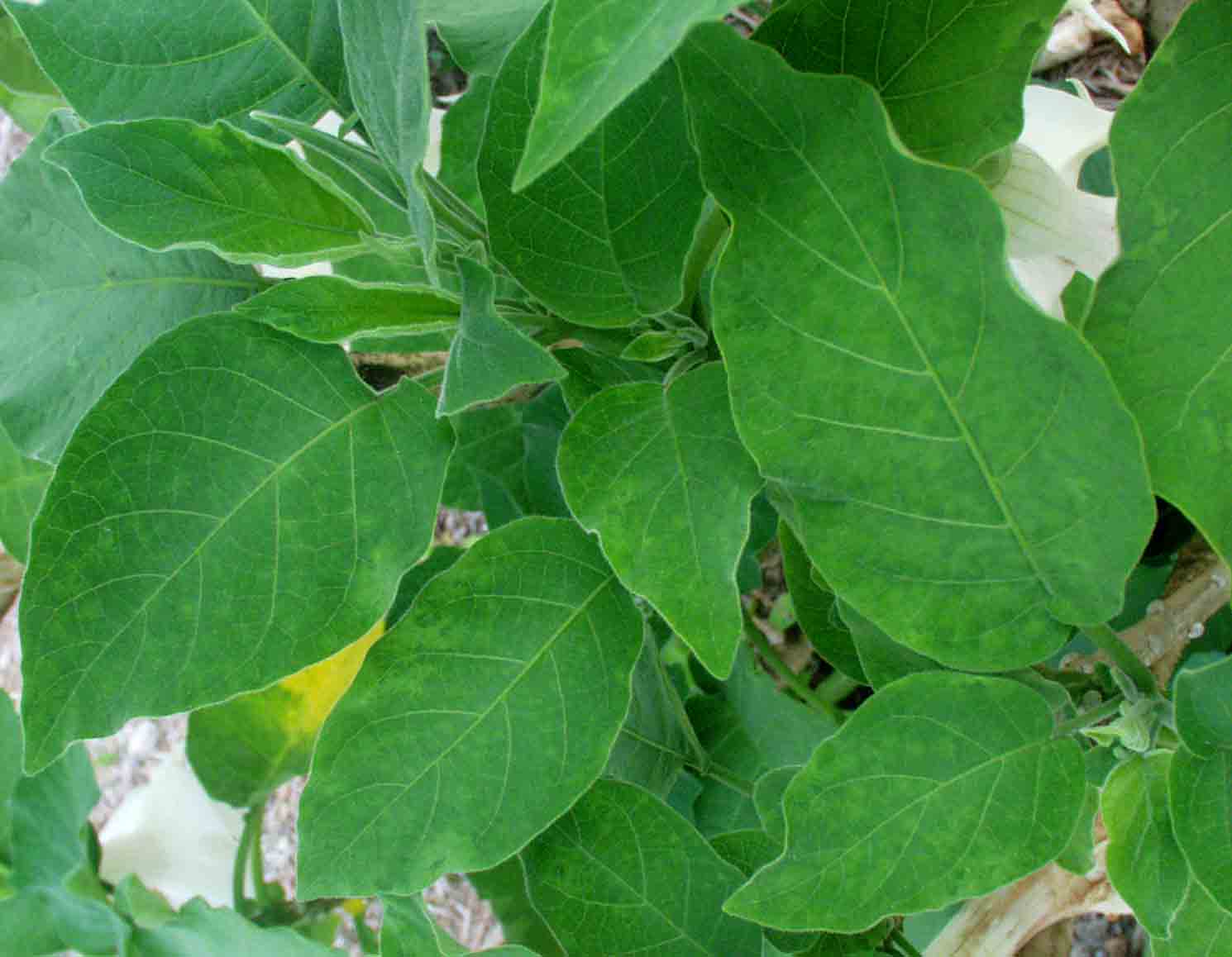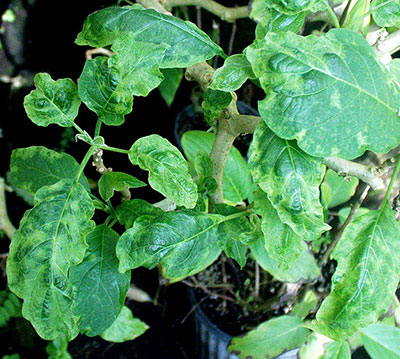Colombian datura virus
The Colombian datura virus (CDV) was detected in Brugmansia sp. plants in New South Wales in 2007. Subsequent surveillance of Brugmansia plants in Victoria during 2007, detected the virus in a nursery in a variegated species.
The distribution of this virus in Australia is still unclear as affected plants may be asymptomatic, which makes the detection and spread potential difficult to predict. It's also unclear what effect this virus may have on other crops in Australia.

Symptoms of CDV
Symptoms of CDV can include:
- reduction in leaf size
- vein banding
- chlorotic flecking on leaves followed by mottling (Figure 1)
- mosaic and rugosity (Figure 2)
- plant stunting.
Infection can be symptomless, but if plants are stressed, leaf mottling and mosaic patterns will become evident.
Host plants
CDV affects:
- angles trumpets Brugmansia species
- cape gooseberry (Physalis peruviana)
- glasshouse tomatoes (Lycopersicon esculentum)
- gold finger (Juanulloa aurantiaca)
- pepino (Solanum muricatum)
- Petunia x hybrida
- terrestrial orchids (Spiranthes cernua)
- tobacco (Nicotiana tabacum).

Spread of virus
The virus is transmitted by:
- a vector (aphid nonpersistent transmission by Myzus persicae [order Hemiptera])
- mechanical inoculation
- grafting.
(Salamon 2005)
CDV in other countries
In 1996, CDV was detected in about 300 plants of tomato variety Cabrion in one greenhouse in the Netherlands. Evidence was obtained that the tomato plants were infected by Myzus persicae that acquired the virus from a CDV-infected Brugmansia plant in the same greenhouse (Verhoeven 1996).
In Hungary, CDV has been found to infect angel trumpets (Brugmansia spp.) frequently and cape gooseberry (Physalis peruviana) and pepino (Solanum muricatum) sporadically. The symptoms persist or disappear soon after infection (Salamon 2005).
The virus known to occur in:
- Canada
- Colombia
- Germany
- Hungary
- India
- Japan
- Netherlands
- Poland
- United States of America
Reporting an unusual plant insect pest or disease
Report any unusual plant pest or disease immediately using our online reporting form or by calling the Exotic Plant Pest Hotline on 1800 084 881. Early reporting increases the chance of effective control and eradication.
Please take multiple good quality photos of the pests or damage to include in your report where possible, as this is essential for rapid pest and disease diagnosis and response.
Your report will be responded to by an experienced staff member, who may seek more information about the detection and explain next steps.
Report onlinePhoto credits
Figure 1 courtesy of Dr Rajarshi Kumar Gaur
Figure 2 courtesy of Scott Adkins, USDA-ARS
Figure 3 courtesy of Scott Adkins, USDA-ARS
References
Chellemi DO, Webster CG, Baker CA, Annamalai M, Achor D, Adkins S, 2011, Widespread Occurrence and Low Genetic Diversity of Colombian datura virus in Brugmansia Suggest an Anthropogenic Role in Virus Selection and Spread. Plant Disease 95 (6): 755–761
Kumar Verma R, Mishra R, Gaur RK, 2014. First Report of Colombian datura virus in India. New Disease Reports 30, 29
Salamon, P, 2005, Occurrence of Colombian datura virus in Brugmansia hybrids, Physalis peruviana L. and Solanum muricatum Ait in Hungary. Acta Virol. 49 (2):117–22
Verhoeven, J, 1996, First report of Colombian Datura potyvirus in tomato. European Journal of Plant Pathology, Volume 102 (9): 895–898.
